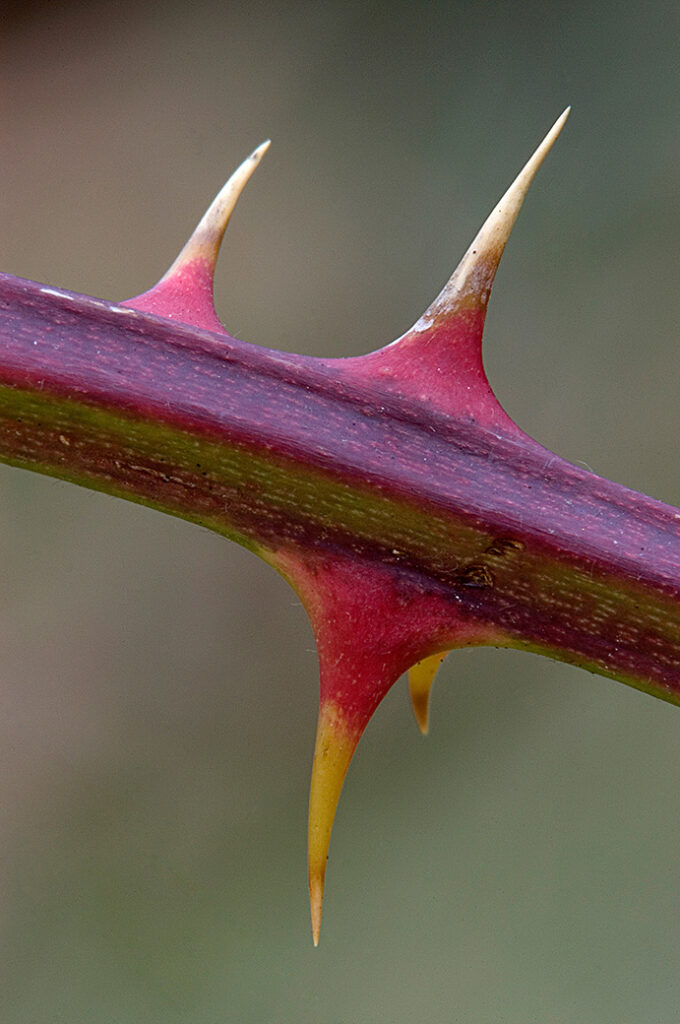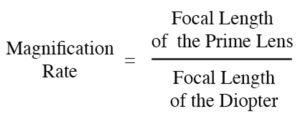Known as “Close-Up Lenses” and “Close-Up Filters” (although they are not filters in that they do not “filter” out any particular light quality), are simple accessory lenses that screw onto the front of an existing lens allowing it to focus closer. (As a matter of fact, with one of these diopters on the front of your lens, you won’t be able to focus at infinity). They are available in various diopter strengths, such as +1, +2, +4, etc. - the higher the number, the more powerful the diopter, the more magnification it has.
Pros:
There are definite advantages to using close-up diopters, not the least of which is expense. These are relatively inexpensive accessories that can be purchased just about anywhere that sells filters. They’re also extremely compact - about the same size as a filter - making them easy to carry with you in the field. They don’t reduce the amount of light coming through the lens, so you won’t have to slow your shutter speed down due to loss of light, and it makes it easier to compose and focus an image.
Cons:
Close-up diopters are not the perfect solution for all macro work. They are typically very simple single-element lenses (yes, they are actually lenses - complete with their own focal lengths) which can have a negative effect on the image quality, especially when shooting with wide open apertures or with long lenses. Even though they are usually design to be used on lenses in the 50mm range, using one on a 50mm lens with the aperture wide open will usually produce an image that is noticeably soft around the edges, forcing you to stop the lens down about half way in order to achieve decent quality. Though these diopters give higher magnification rates with longer lenses, the image quality degrades as the lens length increases. Diopters also are a bit limited to the magnification rates they can reach. Yes, you can stack diopters on top of diopters to get more magnification (add the diopter’s powers together for the total strength - a +2 diopter stacked with a +3 is the equivalent of a +5 diopter), but the image quality only suffers that much more. If you must stack them, place the stronger diopter on the lens first, then stack the weaker diopter on top. I wouldn’t recommend stacking more than two diopters at any one time.

Thorns - Nikkor 70-210mm @ ~100mm w/Nikon 6T Diopter @ ~ 1:2
1/15 sec @ f8
Multi-Element Diopters
There are high-quality close-up diopters available that reduce or completely remove some of the shortcomings of conventional close-up diopters. Enter the “Multi-Element Close-up Diopter”. As the name implies, these are constructed with multiple lens elements which greatly improve their quality over a broader range of primary lens focal lengths. Although considerably more expensive than single-element diopters (a single diopter costs a good bit more than an entire set of three single element diopters), they are still a relatively inexpensive solution for high-quality macro work. The one drawback common with all close-up diopters is calculating the magnification rate when using them. It can be done, but, as I said, it’s a calculation:

Note that what is used in the abover calculation is the focal length of the diopter - not the power of the diopter. To calculate the focal length of the diopter, we use the following equation:

A +2 diopter has a focal length of 500mm. When used on a 50mm lens, we can now calculate the following:

Which would be .1X, or 1/10X. This calculation is with the lens focused at infinity. A slightly higher magnification rate can be obtained by setting the focus of the primary lens to a closer setting.
Calculating magnification rates this way is not very practical in the field (at least it isn’t for me!). The good news is that as you use your equipment and become more familiar with it, you will develop a feel for magnification rates that your lenses coupled with diopters have.
